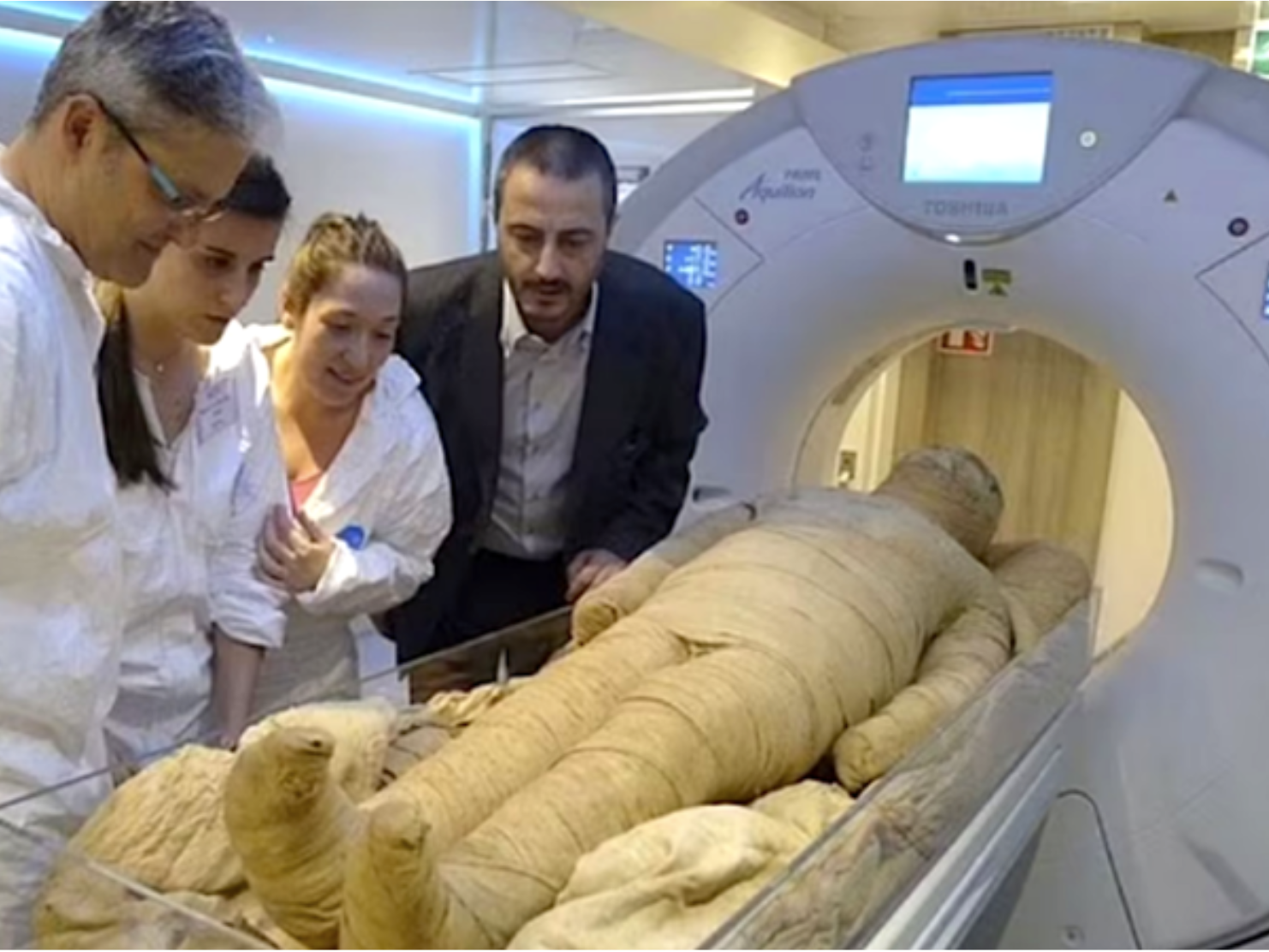Lucy: media stars 50 years

Ethiopia, 24 November 1974. Lucy's skeleton was found in Hadar, one of the oldest traces of human ancestors. The Australian hominid of Australopithecus afarensis is between 3.2 and 3.5 million years old.
So they considered it the ancestor of species, the mother of all of us. In this half-century, more than 400 remains of the species Australopithecus afarensis have been found. Thanks to these studies and Lucy's, we now know a lot more about the characteristics of the species. But there are still many unanswered questions that question whether Lucy was hominid: Was he able to make tools and use them?
And in these 50 years, Lucy has also had to deal with Lucy. Other older species have been found: Ardipithecus ramidus, Ardipithecus kadabba, Orrorin tugenensis and Sahelanthropus tchadensis. Lucy was the first to overcome the barrier of 3 million years, but with these species we would reach 6-7 million years. Of course, it's much harder to say that these species were hominids.
And Lucy's biggest competition is other contemporary species. “At the same time we have many other species,” says Yohannes Haile Selassie, director of the Institute of Human Origins (IHO) at Arizona State University. “The human family looked more shrub than a bonsai, with many outbreaks growing in front of each other, rather than being a single trunk.”
Lucy has had an excellent marketing campaign over half a century, and it cannot be denied that these are high-value traces (...) But that does not mean that Homo is the ancestor of all species and that other candidates should be allowed in the hypotheses.
For example, in 1999, on the shore of Lake Turkana, the Kenyanthropus platyops skull was located, 3.5 million years old, and in 2016 the first full skull of Australopithecus anamensis was discovered, 3.8 million years ago.
But Lucy was a media star from the very beginning, and other signs have remained in its shadow. Lucy's name is because they were listening to the song Lucy in the sky with diamonds from The Beatles when the finding was discovered. Turned into a pop icon, he has carried out long tours around the world, including the one that took place in the United States in 2006, for the concern of the experts. In 2015, then-President of the United States, Barack Obama, enjoyed an absurd privilege of touching the bones. Don Johansson, who discovered the clues, has recently visited Ethiopia, and young amateurs have asked selfis for the 80-year-old archaeologist…
Lucy has had an excellent marketing campaign over half a century, and it cannot be denied that these are high-value traces, especially because 40% of the entire skeleton has been saved and because “it is the most analyzed fossil in the world,” according to IHO member Kaye Reed. That does not mean, however, that Homo is the ancestor of all species, and other candidates must be given room in the hypotheses. According to Washington University paleoanthropologist Bernard Wood, “Lucy is still the best candidate.”
Luxorren, Erregeen Haranetik gertu, hilobi garrantzitsu baten sarrera eta pasabide nagusia aurkitu zituzten 2022an. Orain, alabastrozko objektu batean Tutmosis II.aren kartutxoa topatu dute (irudian). Horrek esan nahi du hilobi hori XVIII. dinastiako faraoiarena... [+]
AEB, 1900eko azaroaren 6a. William McKinley (1843-1901) bigarrenez aukeratu zuten AEBetako presidente. Berriki, Donald Trump ere bigarrenez presidente aukeratu ondoren, McKinleyrekiko miresmen garbia agertu du.
Horregatik, AEBetako mendirik altuenari ofizialki berriro... [+]
Urruña, 1750eko martxoaren 1a. Herriko hainbat emakumek kaleak hartu zituzten Frantziako Gobernuak ezarritako tabakoaren gaineko zergaren aurka protesta egiteko. Gobernuak matxinada itzaltzeko armada bidaltzea erabaki zuen, zehazki, Arloneko destakamentu bat. Militarrek... [+]
In the Maszycka cave in Poland, remains of 18,000 years ago were found at the end of the 19th century. But recently, human bones have been studied using new technologies and found clear signs of cannibalism.
This is not the first time that a study has reached this conclusion,... [+]
Porzheim, Germany, February 23, 1945. About eight o’clock in the evening, Allied planes began bombing the city with incendiary bombs. The attack caused a terrible massacre in a short time. But what happened in Pforzheim was overshadowed by the Allied bombing of Dresden a few... [+]
Poloniar ikerlari talde batek Sevillako Italica aztarnategiko Txorien Etxea aztertu du, eta eraikinaren zoruko mosaikoak erromatar garaiko hegazti-bilduma xeheena dela ondorioztatu du.
Txorien etxean 33 hegazti daude mosaikoetan xehetasun handiz irudikatuta. Beste... [+]
Judea, 2nd century AD. In the turbulent atmosphere of the Roman province, a trial was held against Gaddaliah and Saul, accused of fraud and tax evasion. The trial was reported on a 133-line paper in Greek (pictured). Thinking that it was a Nabataean document, the papyrus was... [+]
Vietnam, February 7, 1965. The U.S. Air Force first used napalma against the civilian population. It was not the first time that gelatinous gasoline was used. It began to be launched with bombs during World War II and, in Vietnam itself, it was used during the Indochina War in... [+]
Archaeologists have discovered more than 600 engraved stones at the Vasagård site in Denmark. According to the results of the data, dating back to 4,900 years ago, it is also known that a violent eruption of a volcano occurred in Alaska at that time. The effects of this... [+]
Japan, 8th century. In the middle of the Nara Era they began to use the term furoshiki, but until the Edo Era (XVII-XIX. the 20th century) did not spread. Furoshiki is the art of collecting objects in ovens, but its etymology makes its origin clear: furo means bath and shiki... [+]
In an Egyptian mummy of 3,300 years ago, traces of Yersinia pestis, the bacterium that caused the Justinian plague in the 6th century and the Black Plague in the 14th century, have just been found.
Experts until now believed that at that time the plague had spread only in... [+]
Greenland, the end of the 10th century. The first Scandinavian explorers and settlers arrived on the island. But by the 15th century these settlements had been abandoned and the original Inuit remained. But in 1721, the missionary Hans Egede organized an expedition and the... [+]
In 2017, Indonesia and the Netherlands signed an agreement to return the heritage stolen by the European country because of colonialism for three centuries. The Indonesian responsible for the return process, Gusti Agung Wesaka Puja, explained that this agreement "was important in... [+]
Greece 1975. The country began the year as a republic, three weeks earlier, in the referendum on 8 December 1974, after the citizens decided on the end of the monarchy.
A decade earlier, in 1964, when King Paul I died, his son Constantine took the throne at the age of 23.
But... [+]
Copenhagen, 18 December 1974 At 12 noon a ferry arrived at the port, from where a group of about 100 Santa Claus landed. They brought a gigantic geese with them. The idea was to make a kind of “Trojan Goose” and, upon reaching the city, to pull the white beard costumes... [+]

























